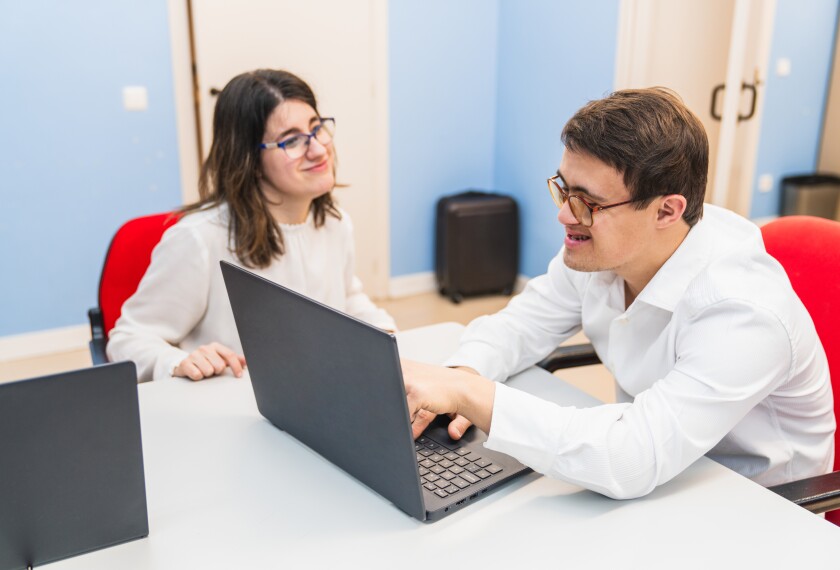When students who have disabilities arrive at Monroe High School, they’ve often spent nearly a decade learning that their differences mean they’ll be taught separately from their peers who spend their days in general education classrooms.
But that all changes when they start classes at Monroe High, northeast of Seattle, where school leaders have created a system in which all students learn in general education classrooms most of the time, regardless of their needs.
Instead of being pulled out of classes for specially tailored lessons, students who have disabilities most often receive assistance specified in their individualized education program, or IEP, or 504 plan—such as additional help with math lessons, emotional regulation, or communication—in their regular classroom.
“It takes a staff being willing to continue to learn and be uncomfortable,” said Principal Brett Wille, “and just understand we’re literally changing a system that wasn’t designed for these outcomes and to be excited to be a part of that solution.”
Monroe is one of 16 schools in Washington state that partner with the Haring Center for Inclusive Education at the University of Washington with the goal of demonstrating that all students benefit when schools are deliberately crafted with the needs of students with disabilities in mind.
Participating schools receive coaching and professional development from Haring Center staff. Other teachers and school leaders, as well as Haring Center staff, also frequently observe the work in the participating schools and offer feedback about what’s working well and what might need improvement.
The partnership was made possible by a state government grant to support more inclusionary practices in the state—particularly to reach a threshold where students with disabilities spend at least 80 percent of their time in general education classrooms.
That goal is driven by federal policy that requires students be taught in the “least restrictive environment” appropriate for them. Nationwide, two-thirds of students with disabilities met that goal in the fall of 2022, up from 60.5 percent in 2010 and less than half in 2000, according to the National Center for Education Statistics.
The partnership will expand in the fall to include 22 schools. The participating schools range from elementary to high schools, with each level presenting its own unique challenges and opportunities.
At Monroe High, one of the biggest challenges—and opportunities—is combatting the stigma students with disabilities sometimes feel when they’ve spent their entire academic careers up to that point being singled out for extra help, Wille said.
“If you have kids that have traveled through a system for years and years and years and have been isolated and excluded, it takes some time to get them to believe in themselves again,” Wille said. “Even in spite of that, we are saying, ‘No, we’re cutting that off here.’”
Students with disabilities perform better academically when they spend significantly more time in mainstream classrooms, in large part because they’re exposed to more rigorous coursework in those settings, according to a study of Indiana students published in the Journal of Special Education in 2022.
Researchers have also found that the inclusion of students with disabilities in general education classrooms has resulted in students without disabilities learning how to respect and help others. Several studies over the years examining these more inclusive practices have found either neutral or positive effects on all students’ performance in core subjects like math and reading.
At Monroe there are additional staff members in each classroom ready to assist students who need additional help so they can be pulled out of the general education classroom less frequently. This year, the school also introduced a unified basketball team, which includes students with and without disabilities on the same team.
While Monroe High has made strides in recent years, Wille said there’s more progress to be made.
But he’s confident it will come in time and noted that, anecdotally, students of all abilities and backgrounds have grown important social skills, like empathy and respect, from learning in a diverse setting. Students with disabilities, especially, have “gotten their dignity back,” Wille said, and feel more confident in themselves.
“It starts with a high bar for what we want all students to learn,” Wille said, “and we figure out how to do that together with all of our students, and not separate and rank and sort students and exclude them from the experience that all students should gain.”








